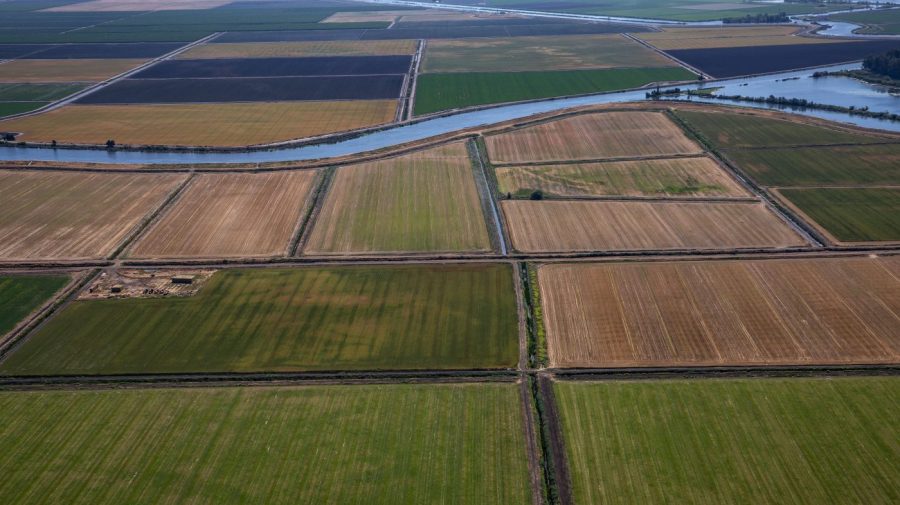
California water officials are projecting a boost in delivery fulfillments this year, despite enduring a predominantly dry January.
The Department of Water Resources on Tuesday announced that its State Water Project would likely be able to allocate 20 percent of requested supplies, up from 15 percent at the end of December and just 5 percent earlier that month.
The State Water Project, a storage system that serves about 27 million residents and 750,000 acres of farmland, spans about two-thirds the length of California. Although 29 public agencies and water districts have long-term delivery contracts with the project, quantities available each year vary based on seasonal precipitation and reservoir levels.
The initial more dismal release projections accounted for arid fall months as well as the current La Niña phase of the El Niño–Southern Oscillation weather phenomenon. During La Niña years, the southern U.S. — including much of California — typically endures dryer, hotter conditions.
The Golden State received a welcome several days of wet weather this past weekend, with certain parts of the Los Angeles metropolitan region that have been ravaged by wildfires accumulating more than an inch of rain.
Releases from the State Water Project come from the Sacramento-San Joaquin Delta (the “Bay-Delta”) and provide drinking water to nearly 27 million Californians. This is the system that President Trump has repeatedly targeted for failing to bring enough water to quench Southern California’s devastating blazes.
The president this past weekend went so far as to direct U.S. government agencies to circumvent the state’s water policies as needed, issuing an executive order calling for immediate “actions to override existing activities that unduly burden efforts to maximize water deliveries.”
Trump late Monday declared that the U.S. military had entered California and “turned on the water,” writing on Truth Social that the resource was “flowing abundantly from the Pacific Northwest, and beyond.”
But the Department of Water Resources rejected the president’s claim and explained that the federal government had only restarted the water pumps after they were shut down for maintenance.
“The military did not enter California,” the agency wrote on the social platform X. “The federal government restarted federal water pumps after they were offline for maintenance for three days.”
“State water supplies in Southern California remain plentiful,” the department added.
Despite Trump’s remarks about pumping more water from the North, Los Angeles actually gets much of its water elsewhere, with about 38 percent of drinking water in 2023 — the most recent year with data available — coming from the Los Angeles Aqueduct. The aqueduct conveys water from the Owens River Valley in the eastern Sierra Nevada to the city, rather than from the North.
Another 9 percent of the city’s supply came from local groundwater and 2 percent from recycled wastewater, with 51 percent imported from the nearby Metropolitan Water District of Southern California. Just 30 percent of Metropolitan’s water originated in the northern part of the state, while 20 percent came from the Colorado River and 50 percent from a combination of other sources.
As far as seasonal releases are concerned, the Department of Water Resources stressed that the State Water Project’s largest reservoir is currently in good shape — sitting at 127 percent of average levels for this time of year.
While recognizing that the long-range forecast does hint at the revival of rain and snow in early February, officials warned on Tuesday that more storms are needed.
“We are in the middle of our biggest months for precipitation for California, and unfortunately January has been very dry, putting a significant dent in our season,” Karla Nemeth, director of the department, said in a statement.
“A return to wet weather is critical for our season’s success and it will take many more storms to make up the deficit and further.












